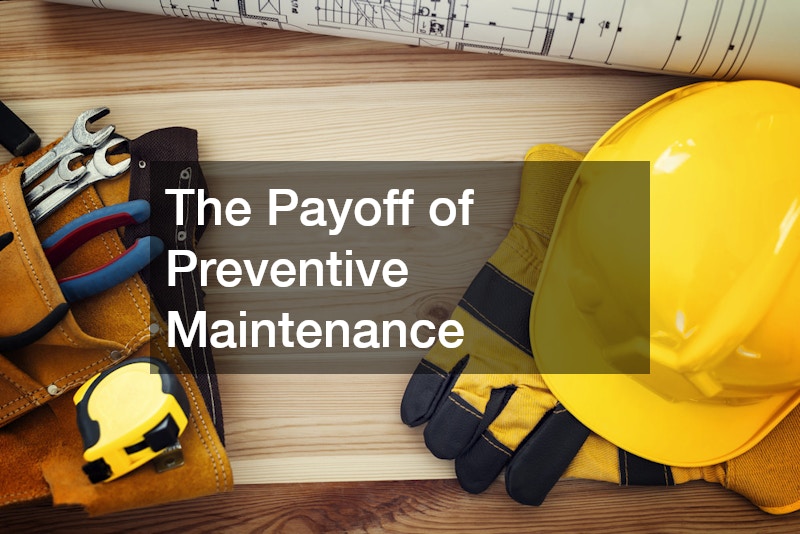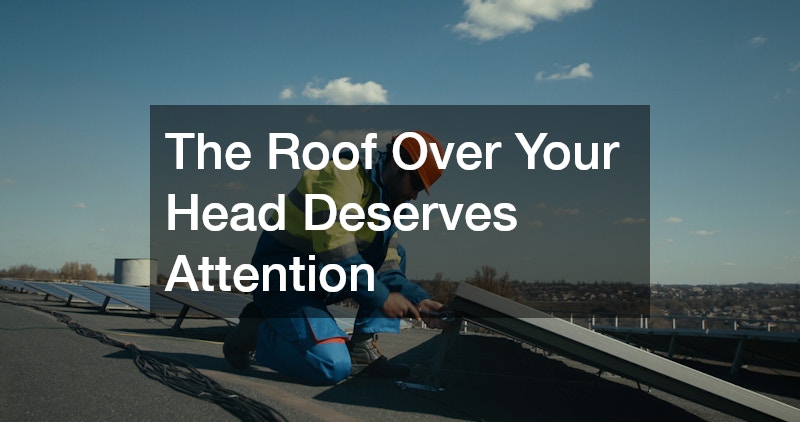Investing in your home can feel like a balancing act between immediate costs and long-term benefits. The good news is, certain upgrades don’t just improve your daily comfort—they also deliver real financial returns over time. From lowering utility bills to increasing resale value, smart home improvements can end up paying for themselves. Some new home upgrades don’t always require a major renovation, either. Some are simple updates or maintenance habits that reduce costly repairs and make your home more efficient. The key is knowing which upgrades are worth the effort and how they add value in both the short and long term.
In this article, we’ll walk through ten home improvements that offer some of the best returns on investment. Whether you’re staying put or preparing to sell, these new home upgrades can help stretch your dollars while enhancing how your home functions. You’ll also discover ways to work with professionals who can help make these changes seamless and worthwhile. Keep reading to see how these improvements can save you money, time, and stress.
A Smarter Way to Manage Your Home’s Water
Clean, safe water is something homeowners often take for granted—until a problem arises. Issues like hard water, mineral buildup, or even contamination can damage appliances, clog pipes, and affect your family’s health. Installing a whole-home water treatment system might seem like an upfront investment, but it’s one of the best new home upgrades that pays for itself over time. It protects your plumbing, extends the lifespan of water-using appliances, and reduces your reliance on bottled water or constant filter replacements. Not to mention, it can improve the taste and smell of your tap water, which is a small but noticeable daily upgrade. Many systems are low-maintenance and can be customized based on the specific needs of your area’s water supply.
In regions with particularly hard water, the damage to fixtures and pipes can add up fast. A good water treatment system helps prevent scale buildup in water heaters, dishwashers, and washing machines, which reduces energy usage and repair costs. Over time, this means lower utility bills and fewer calls to plumbers for clogs and leaks. It’s also a feature that adds value if you decide to sell, especially in areas where clean water is a concern. If you’re unsure where to start, a licensed contractor or plumbing specialist can test your water and recommend the right solution for your home. It’s one of those upgrades you won’t realize you needed until you’ve experienced the benefits firsthand.
The Hidden Power of Proper Insulation
Poor insulation is one of the top causes of energy loss in a home, yet it often goes unnoticed. Many older homes have inadequate or deteriorating insulation that allows heat and cool air to escape, forcing HVAC systems to work harder and run longer. Investing in proper insulation installation, especially in attics, basements, and crawlspaces, can significantly reduce your monthly energy bills. It also helps maintain a consistent indoor temperature, which makes your home more comfortable year-round. Beyond the savings, insulation plays a key role in soundproofing and moisture control, which adds to your home’s overall livability. Depending on your local climate, upgrading to spray foam or blown-in cellulose can provide excellent returns.
Professionally installed insulation might even qualify for local rebates or tax incentives, making it more affordable than many homeowners expect. Over time, the energy savings alone often cover the installation costs, especially in homes with high utility usage. Unlike aesthetic upgrades, insulation is one of the new home upgrades that stays behind the scenes and works every day without requiring your attention. It’s also a green choice—reducing your home’s carbon footprint and helping contribute to broader energy efficiency goals. If you’re unsure whether your home is properly insulated, a home energy audit can pinpoint trouble areas and provide recommendations. For both comfort and cost savings, this is one upgrade that quietly pays off in big ways.
A Better Approach to Hot Water at Home
Hot water is a daily necessity, and most homeowners don’t think about their water heater until it breaks down. Traditional tank water heaters keep water warm all day, even when you’re not using it, which wastes energy and increases your utility bills. A tankless water heater, on the other hand, heats water only as needed. This efficient system not only reduces energy consumption but also takes up less space and has a longer lifespan than traditional units. The result is lower monthly costs and fewer repairs, which makes the switch a smart long-term investment. Homeowners who install one often notice immediate improvements in hot water availability and reliability.
Tankless systems also reduce the risk of leaks and flooding that come with aging storage tanks. Because they don’t store water, the chance of catastrophic failure is much lower, especially in older homes. They can be installed on-demand in multiple locations, making them a flexible option for households of all sizes. Over time, the energy savings and reduced maintenance can outweigh the higher upfront cost of installation. If you’re considering a replacement or building a new home, this is an upgrade worth prioritizing. Whether you’re saving on energy bills or just enjoying endless hot showers, this system quickly proves its value.
The Payoff of Preventive Maintenance
Most homeowners know they should keep up with routine maintenance, but it’s easy to delay when everything seems to be working fine. However, minor issues can become major expenses if ignored, especially in systems like HVAC, plumbing, and electrical. Staying on top of seasonal tasks such as gutter cleaning, furnace checks, and air conditioning maintenance helps avoid breakdowns and extend the life of your equipment. For example, dirty air filters or clogged coils in your AC system can reduce efficiency by up to 15%, costing you more every month. Investing in regular upkeep pays for itself by preventing costly repairs and keeping your home running smoothly.
Setting aside a budget to hire professionals for this maintenance is one of the best new home upgrades. A certified technician can catch small problems early, like refrigerant leaks or worn belts in an HVAC system, before they lead to full system failure. Regular air conditioning maintenance also keeps indoor air quality in check, which is a bonus for households with allergies or asthma. Keeping your systems in top shape improves performance and ensures you’re not wasting energy. Plus, well-maintained homes retain more value over time, which is helpful when it’s time to sell. Treat maintenance as an investment, not a chore—it’s one of the simplest ways to protect your home and your wallet.
The Value of Quick Repairs and Smart Plumbing
Leaky faucets and slow drains might seem like minor annoyances, but they can lead to serious damage if left unchecked. Water damage is one of the most expensive and difficult issues to fix in a home, especially when it spreads behind walls or under floors. Working with local plumbers to address even small issues quickly can save you thousands down the road. Whether it’s upgrading outdated fixtures, unclogging drains, or fixing pipe leaks, these fixes are often quicker and more affordable than homeowners expect. Plus, modern plumbing upgrades can increase water efficiency, reducing your utility bills and environmental impact.
Even if you’re handy, it’s best to leave critical repairs to licensed professionals who can ensure the job is done right. A local plumber can spot issues you may not notice—like hairline cracks or corrosion—that could lead to flooding or mold growth. Plumbing inspections are especially important in older homes, where pipes may be nearing the end of their lifespan. Taking a proactive approach avoids emergency calls, which tend to be more expensive and stressful. These types of repairs don’t just fix problems—they help future-proof your home, making it more efficient and more appealing to potential buyers.
Why Your Electrical Panel Might Be Costing You
Your home’s electrical panel is like the control center of your entire system, but many homeowners overlook it until there’s a problem. Outdated panels can’t keep up with modern energy demands, leading to frequent tripped breakers or even fire hazards. Upgrading with the help of a licensed local electrician can improve your home’s efficiency and safety at the same time. Whether you’re adding a home office, installing smart devices, or charging an electric vehicle, your panel needs to handle the extra load. A modernized system distributes power more efficiently and supports future upgrades without risk.
An electrical upgrade can also increase your home’s value, as buyers are often wary of homes with outdated wiring or insufficient capacity. In some cases, insurance companies may even offer better rates for homes with updated electrical systems. If you’ve noticed flickering lights, buzzing outlets, or warm switch plates, those are signs it’s time for an inspection. A local electrician can evaluate your current setup and recommend improvements that improve performance and peace of mind. Like many new home upgrades, this one not only protects your investment, it makes your home more adaptable and energy-conscious.
A Boost in Curb Appeal That Pays Off
Your home’s exterior is the first thing people notice, and it plays a big role in perceived value. Old, cracked, or faded siding can make an otherwise well-maintained home look worn and outdated. Replacing or upgrading your siding doesn’t just improve curb appeal—it also improves insulation, reducing heating and cooling costs throughout the year. Working with a professional siding company ensures a quality installation that can last for decades with minimal maintenance. Modern siding materials are also more energy-efficient and weather-resistant, protecting your home against the elements.
Considering siding as one of your new home upgrades can also help seal gaps where air leaks occur, further improving your home’s energy performance. Some homeowners even qualify for energy rebates when they switch to insulated vinyl or fiber cement siding. The added benefit of improved noise insulation makes a noticeable difference, especially in busy neighborhoods. Beyond comfort, new siding is a major selling point that can significantly boost your home’s marketability. A reputable siding company can help you choose materials and styles that enhance your home’s architectural features and fit your budget. When it comes to resale value and day-to-day performance, this is one upgrade that pays dividends.
Flooring That’s Worth the Investment
Flooring is one of the most visible and heavily used features in any home, and it plays a major role in both comfort and resale value. While there are plenty of budget options available, investing in high-quality hardwood flooring is often the smartest long-term choice. Hardwood offers durability, easy maintenance, and a timeless style that appeals to nearly every buyer. Unlike carpet or vinyl, hardwood can be refinished multiple times, extending its lifespan for decades. Although the upfront cost may be higher, the long-term value is significant, both in daily use and property valuation.
Hardwood flooring also helps improve indoor air quality by reducing allergens and trapping less dust than carpeted surfaces. This makes it especially appealing to health-conscious buyers or those with pets and children. It’s also a sustainable choice when sourced responsibly, adding to your home’s eco-friendly profile. Whether you’re remodeling one room or updating an entire floor, hardwood is one of the new home upgrades that can transform a space in both appearance and function. For homeowners looking to invest in lasting quality, this upgrade stands out as one of the few that truly pays for itself over time.
How Clean Air Can Save You Money
Indoor air quality isn’t just about comfort—it’s a key factor in your health and your home’s energy efficiency. Over time, dust, pollen, pet dander, and even mold can build up in your home’s ductwork, reducing airflow and forcing HVAC systems to work harder. Hiring an air duct cleaning company can restore airflow, lower energy bills, and improve air quality, especially in homes with pets, allergies, or high humidity. Clean ducts help your system run more efficiently and prevent contaminants from circulating through your living space. The result is better health, lower energy costs, and reduced wear on your heating and cooling equipment.
Professional duct cleaning also gives technicians a chance to inspect for leaks, insulation issues, or blockages that could be costing you money. While this isn’t a task that needs to be done every year, it’s worth considering every few years or after major home renovations. Many homeowners report immediate improvements in both airflow and allergy symptoms after cleaning. An experienced air duct cleaning company can also recommend filters or additional improvements to keep your system running at peak performance. This often-overlooked upgrade is a low-effort way to extend HVAC life and reduce unexpected maintenance costs.
The Roof Over Your Head Deserves Attention
Your roof does more than protect your home from the elements—it plays a big role in insulation, ventilation, and energy efficiency. Even minor leaks or worn shingles can lead to major structural damage if ignored. Regular inspections and timely repairs from a reputable roofing service can extend the lifespan of your roof and prevent expensive emergencies. Whether it’s resealing flashing, replacing shingles, or improving attic ventilation, these small upgrades can make a big difference. They also help regulate indoor temperatures, reducing the workload on your HVAC system and lowering energy bills.
A well-maintained roof is also a major selling point for potential buyers, signaling that the home has been properly cared for. In many regions, local roofing service providers offer affordable maintenance packages or seasonal checkups. These services are especially valuable after storms or during seasonal transitions when weather damage is most common. Replacing a roof is expensive, but keeping it in good shape can delay that cost for many years. By investing in regular upkeep, you’re not only protecting your home’s structure, you’re making a smart financial move that can pay for itself many times over.
When it comes to new home upgrades, not all improvements are created equal. Some changes offer more than aesthetic appeal—they bring tangible returns through energy savings, reduced repair costs, and increased home value. Whether you’re installing a tankless water heater or working with a local electrician to upgrade your panel, the right investments can pay off in both peace of mind and your bank account. Proactive homeowners who take care of systems like plumbing, roofing, and insulation often find their homes run more efficiently and last longer.
New home upgrades that practically pay for themselves aren’t about cutting corners—they’re about working smarter. By focusing on projects that improve functionality and reduce long-term costs, you can make your home more comfortable, efficient, and valuable. Whether you do one upgrade at a time or tackle several at once, these changes will serve you well for years to come. So, if you’re wondering where to start, pick the one that aligns most with your home’s current needs—and get ready to enjoy the benefits.




